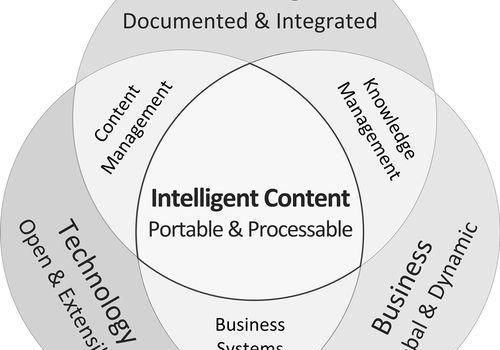Who Is Intelligent Content Designed For?
The future of content marketing is here, in the form of intelligent content. But many might ask how technology could change in a good way the way we produce and deliver content? Content is about storytelling and expressing feelings, so how could we integrate new technologies and coding into this process? Intelligent content allows us to adapt various types of content with coding so that it can automatically be processed for multiple purposes and to be adapted for various interfaces and devices.
What Is Intelligent Content?
Academic writers online might wonder how intelligent content would affect their jobs and the future of writing jobs. Intelligent content manages on Paperwritten.com to bring together the wonders of technology and the human capability in a way that is efficiently and powerfully supporting an organization’s goals. But if we know what ‘content’ stands for, what exactly does ‘intelligent’ mean in this context? Intelligent refers to a strategic approach to develop and maintain content as a business asset, content efforts that manage to scale, the efficient use of technology, people and content processes, creating content that is structured to be retrieved and reused, content that is created to offer value for customers and content that is designed for automation.
On the one hand, intelligent marketing is moving away from humans to touch each type of content at numerous instances of use. On the other hand, it moves towards an advanced publishing process that relies on metadata and data and which makes use of smart technology, such as machine learning and artificial intelligence.
Intelligent content includes marketing content, technical documentation, customer-support content and content for multiple devices and products.
Which Type of Companies Need Intelligent Content
It all started when the technical communication departments started to see the value of intelligent content, and they started creating the technologies and tools necessary to change the paradigm. Ann Rockley and other thought leaders started helping companies see content with different eyes and convinced some of the largest corporate giants in the world to stop considering content only as documents, but as content that can be sent to the right person, in the right channel, at the right time and in the needed language.
Almost any industry starts to understand the benefits that intelligent content has to offer. Media and publishing companies, whose product is content, see this change as a methodology for moving away from the traditional print and instead offer a multichannel content offering. Companies that have to deal with large volumes of content, such as defense, aerospace, life sciences firms, and financial services companies have adopted intelligent content to optimize content retrieval and access.
The companies dealing with high technology industry, such as hardware, software, and peripherals), have been shifting their attention towards intelligent content for some years now, but they are not yet making full use of personalization and metadata. The government uses intelligent content to deliver and manage legislative content.
Some of the most important companies that use it, are Xerox, IBM, 3M, Cisco Systems, Zillow, Content Marketing Institute, Crownpeak, LinkedIn, Wake Forest Innovations, Arrow Electronics and the list could go on.
But, although it might sound as this might be the best thing to happen, intelligent content is not for everyone. Rahel Anne Bailie, a renowned content strategist, says that ‘intelligent content is not for the company who has 50 pages of highly crafted marketing content that never changes. For corporations that have relatively simple content demands … the investment in content to be structured beyond basic HTML may be overkill.’ The concept fits into companies with many products, product lines, languages, many audiences per product line and many locales per language.
What Are The Benefits Of Intelligent Content?
Intelligent content has many benefits to offer. Here are some of the most important:
- It can be output to more channels and can be adapted to the requirements of the recipients and the channel with little or even no human interaction
- It cuts developments, maintenance and review costs
- It increases quality and consistency
- It cuts translation-related costs
- It speeds up delivery time
- It increases customer satisfaction
- It add value to existing content instead of rewriting it, without compromising the jobs for writers
- It can release content in multiple languages at the same time
- It sends the right information, in the right format, to the right customers, at the right time
5 Steps to Writing Intelligent Content
Intelligent content should be:
- Structurally rich
Intelligent content has to be structured, so that it can be both machine and human readable. Content can be delivered automatically and manipulated in various ways only if it has a structure which will tell the process how to display the content on multiple devices.
- Reusable
Intelligent content means reusing the existing modular content components and create new content products. Reusing content reduces the time needed to create, design and publish content, as well as cuts translation costs significantly. Imagine how much time it would take a person to manually copy content from one place and paste it to another. Then when the content needs to be updated it has to be first located in the places where it was copied. This means a lot of time and money wasted and a lot of content that is omitted, confused customers and inaccuracies.
- Adaptable
Intelligent content has to be adaptable or format free; this means that it should not include presentation information (column widths, instructions about fonts, text placement, etc). Computers will be the ones to apply the necessary feel and look for the content that is being created. Format-free content means that it can be delivered in several channels (mobile, print, web), as well as on multiple devices (laptop, smartphone, desktop computer, printer, tablet).
- Semantically rich
Semantically rich content is the one to which it has been added machine-readable information to describe what the content is about. This information, known as metadata, is used by computers to understand and process the content. Metadata allows us to locate the components we need to build customized content for a specific audience, industry, purpose or subject.
- Modular
For content to be modular, it means that it is designed for reuse. So instead of developing documents one at a time, we can create modules or discrete components of content that can be structured into documents and other types of content. Reusable modular content makes it easy to be repurposed for marketing brochures, online help, product data sheets, product splash pages and much more. Modular content is flexible, and it can be translated immediately after approval, increasing productivity.
Intelligent content has changed the traditional meaning of online writing jobs. The content has to be created according to specific guidelines and for specific purposes, not being limited by technology or output.
















